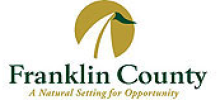Franklin County, Private Partnerships, and Wireless Broadband
Craig Settles has been pumping out some in-depth interviews with community networks on his new Gigabit Nation audio show. This show discusses a wireless network built using a public-private partnership in Franklin County, Virginia.
The approach is outlined in this case study [pdf] and excerpted here:
Franklin County formed a partnership with a local wireless Internet service provider (WISP) to expand the County's local government wide-area network and provide broadband options for the citizens. The project leveraged County structures such as towers and water tanks for WISP transmitters and receivers. We were in the process of upgrading the public safety radio system at the same time, so the two efforts worked together to identify possible new tower locations that would improve radio coverage and meet broadband demand. The partnership provided the WISP with a fast-path to business growth through additional funding and access to existing infrastructure. The County provided space on towers, tanks and poles in exchange for Internet service at County offices. This arrangement lowered deployment costs for the WISP, expediting business growth. The partnership expanded the WISP customer base in Franklin County from 98 customers in early 2005 to approximately 1000 in early 2008. In addition, 15 fire and rescue stations were added to the County’s wide-area-network (WAN) in addition to five other County offices. There are many advantages to moving remote offices onto the WAN, including reduced costs and improved communications and data sharing across County Administration. The wireless mesh network supports data and voice and the WISP is currently segmenting the County's voice traffic on their network to ensure quality of service (QoS).A case study from Motorola [pdf] notes that Franklin County has received awards for its approach:
At the 10th annual Commonwealth of Virginia Innovative Technology Symposium in 2008, Governor Timothy M.



